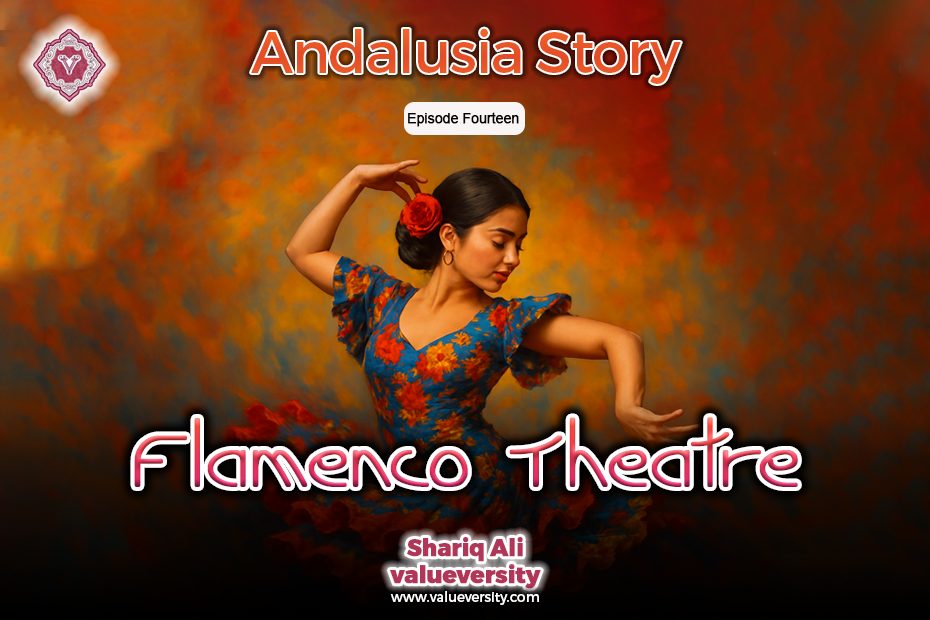Flamenco Theatre, Andalusian Chronicles, Episode 14
By Shariq Ali
Valueversity
It was dusk when we arrived at the doors of Casa de la Memoria with our pre-purchased tickets. Outside the centuries-old stone building, the narrow street buzzed with life. Most of the women had come dressed elegantly, with special care. In this culture, Flamenco holds the same prestige as opera does in Italy or Austria. Since we had arrived a little early, we calmly observed the surroundings. The audience was well-dressed, enthusiastic, yet extremely dignified. The staff, in uniform, were polite and courteous. After checking our tickets, one usher guided us to our seats with the help of a torch.
This small theatre was captivating, with its aura of history and culture. The stage, made of wood, was about fifteen feet long and ten feet wide, raised just a few feet above the ground. Wooden chairs and benches were arranged in a semicircle, only two to three rows deep, accommodating around 150 people. The walls were adorned with paintings, mirrors, and old furniture, all adding to the theatre’s unique charm. A small balcony above allowed some to watch the performance from above.
According to historians, Flamenco’s roots are not confined to Andalusia. Centuries ago, nomadic tribes from Rajasthan and Punjab in India—today known as “Gypsies” or “Romani”—travelled through Iran, Egypt, and North Africa before reaching Spain. They brought with them the beats of the tabla, soulful melodies, and heart-stirring songs. This tradition became the foundation of Flamenco, which is why one can still sense the pulse of India in it. In Andalusia, this tradition merged with Arabic music, Jewish chants, and Christian instruments, giving birth to a new, vibrant form.
As the performance began, the hall was enveloped in magic. First came the soft strumming of the guitar, then the rhythm of clapping, and finally the pounding of dancers’ shoes. The stamping of feet on the wooden floor filled the hall with resonant echoes. Male and female dancers, dressed in heavy, colorful costumes, appeared on stage alternately or together. With their dance came the music of guitars, the powerful voices of singers, and the audience’s intermittent cries of “Olé!”—all combining to create an almost trance-like atmosphere.
Flamenco is not just dance—it is a vivid expression of human emotions. Sorrow, joy, protest, and passion all merge within a single performance. UNESCO has declared it an Intangible Cultural Heritage of Humanity. At its core lies the compás—a cycle of twelve beats—that transports the listener into ecstasy. In Spain, this state is called duende—that moment when artist and audience alike are lost in a spiritual experience.
Today, Flamenco has moved beyond the small Andalusian tablao theatres and spread across the world. Astonishingly, there are now more Flamenco schools in Japan than in Spain itself. This art form remains a living testament to centuries of migration, cultural fusion, and the universal power of music.
…to be continued
